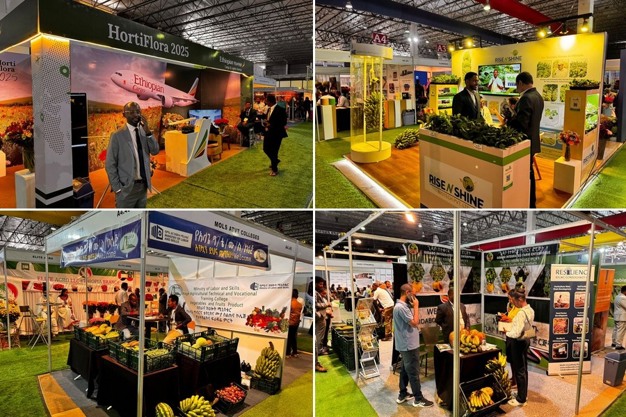The 2025 edition of HortiFlora came to a close yesterday at the Millennium Hall in Addis Ababa, marking its largest event yet, with 140 exhibitors. This year’s fair attracted many international visitors, showcasing Ethiopia’s cut flower industry as well as its growing fruit and vegetable sectors.
Click here for a photo impression of the event

Originally a small-scale trade fair, HortiFlora has evolved into a significant event for buyers seeking a variety of Ethiopian products, from flowers to fruits and vegetables. With an increasing number of exhibitors and international visitors, the event has established itself as a key meeting point for the industry.
Over the past two decades, the event has grown substantially. More growers are now selling directly to buyers, which has led to increased interest from regions like the Middle East and Far East. “It’s a true grower-buyer fair, bringing together the industry’s leading growers, providing a valuable opportunity for buyers to meet multiple suppliers in one location”, says says Dick van Raamsdonk of HPP Exhibitions, who organized the event, in collaboration with the Ethiopian Horticulture Producers Exporters Association (EHPEA).
Ethiopia remains widely known for its cut flower production, but its fruit and vegetable industries, though still developing, are gaining momentum. This year, these sectors were well-represented among both exhibitors and visitors.
While official statistics have yet to be released, initial reports suggest a well-attended event with a high number of international visitors. A post-show article will be published soon.
For those curious about the 140 exhibitors and the overall atmosphere, click here to view photos from the event provided by the organization.
Click here for a photo impression of the event
For more information:
HortiFlora Expo
hppexhibitions.com
